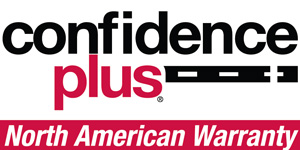Business Hours
- Monday - Friday
- BASHFORD AVE
7:30 AM - 4:30 PM
Phone: (502) 203-0454 - PRESTON HWY
7:00 AM - 4:00 PM
Phone: (502) 230-4279
AMERICAN BRAKE CENTERS INC.
(502) 203-0454 for Bashford Ave or (502) 230-4279 for the Preston Hwy location | 3435 Bashford Ave Ct Louisville, KY 40218
AUTONET TV
Archive for August 2024When Your Tires are Tired (Tire Replacement)Posted August 18, 2024 3:14 AMTires are so reliable these days that few drivers pay much attention to them. But tires wear out. They have a tough job since they are the only point of contact between your vehicle and the road. They have to get your vehicle going from a stop, keep it going, make sure it is headed in the direction you want it to go, and –importantly – slow and stop it. The only time many drivers think about their tires is when there's a problem, such as a flat. Or, they may lose control when they find their vehicle isn't stopping or steering like it used to. One major safety organization estimates that 1 out of every 11 crashes is related to a tire issue. Many of those problems are caused by tire tread wearing out. The rubber is worn off by friction after hours and hours on roads. The sidewalls can also be damaged by your tires hitting curbs, potholes, or other debris. Plus, rubber ages as time passes. We recommend you let us inspect your tires periodically so we can spot potential problems before it's too late. When it's time for you to replace your tires, it's important to know which type is right for your driving habits and what environments your tires usually encounter. The most common tires are called all-season. As the name says, they are pretty good in every season and their tread lasts a long time. In other words, they're good all-purpose, all-around tires. Another option is a performance all-season tire, which has a little more grip but won't last as long. Then there are ultra-high-performance tires (UHP) which have wonderful grip and handling but an even shorter lifespan. They also aren't the greatest in slippery conditions. For those who live in more extreme climates, especially where there is a lot of snow, winter tires are definitely worth considering because their performance in cold, snowy conditions can make a huge difference in traction, improving steering, and stopping. Some places require winter tires during certain periods of winter. Don't underestimate how much of a difference tires can make on your vehicle. Sure, you probably don't pay much attention to them, but they are one of the most important investments you can make, and they can pay valuable dividends when you need them to come through for you. American Brake Centers Inc. A Bumpy Ride (Strut Assembly Replacement)Posted August 11, 2024 3:14 AMIf you’ve noticed your vehicle’s ride has lately been bumpy or you’re hearing strange noises when you drive over bumps, you may need new struts. The strut assembly is part of your vehicle’s suspension system that’s used to absorb the irregularities on the surfaces you drive on. You have probably heard of shocks or shock absorbers. A shock is a piston with gas or liquid inside. When you hit a bump, that shock absorbs the blow. Struts are similar to shocks but they also have a coil spring for extra strength. They’re often used in the front of the vehicle because of the engine’s extra weight. As you might imagine, your struts take a beating every day. Eventually, they will wear out, and your wheels and tires won’t stay connected to the road as well as they used to. In addition to a bumpier ride, you may notice your tires starting to wear with failing struts because those tires aren’t in contact with the road surface as evenly as they used to be. When you bring your vehicle in to us, we’ll run some tests to determine what’s going on and what condition your suspension components are in. Your vehicle’s manufacturer recommends struts to be replaced at certain intervals, and it’s important to change them out with the same type of equipment. They should always be replaced in pairs on the same axle. After your struts are replaced, your suspension should be aligned so everything is headed down the road in the right direction. After that, driving should be smooth sailing. American Brake Centers Inc. The Light Many Drivers Fear (Check Engine Light)Posted August 4, 2024 3:14 AMAsk just about any driver about one thing they fear seeing inside their vehicle and they'll say it's the Check Engine light coming on. You know, that little light on your instrument panel that is in the shape of a vehicle engine, often accompanied by the words Check, Check Engine, Check Engine Service, or Service Engine Soon. There are so many different reasons that light shows up, from something as simple as a loose gas cap to a more serious problem that requires immediate attention. The Check Engine light comes on because a component of your vehicle's onboard diagnostics system is telling you something isn't operating normally. Your vehicle has a lot of sensors built in, all tied together by computers. When the sensors are showing that things somewhere aren't functioning the way they should be, they alert the vehicle's diagnostic computers and tell you something's amiss. The simple rule is if the Check Engine light is on steadily, it's something you should have checked soon but it's not urgent. If it's flashing or has turned red or orange instead of yellow, get your vehicle checked out as soon as possible. If you don't, you may be facing some costly repairs. Here are a few problem areas that may trigger your Check Engine Light.
As you can see, there are many things that can cause the light to come on, and when it does, it really is a good idea to find out why. When you bring your vehicle in, we have an electronic device that can read a code or multiple codes stored in your vehicle's computers. That will provide the technician with clues pointing to the cause of the trouble and helps pinpoint where that trouble is. American Brake Centers Inc. | ||
SearchArchiveJune 2019 (18)July 2019 (4) August 2019 (4) September 2019 (5) October 2019 (4) November 2019 (4) December 2019 (5) January 2020 (5) February 2020 (4) March 2020 (5) April 2020 (4) May 2020 (5) June 2020 (4) July 2020 (4) August 2020 (5) September 2020 (4) October 2020 (4) November 2020 (5) December 2020 (4) January 2021 (6) February 2021 (4) March 2021 (4) April 2021 (4) May 2021 (5) June 2021 (4) July 2021 (4) August 2021 (5) September 2021 (4) October 2021 (5) November 2021 (4) December 2021 (4) January 2022 (6) February 2022 (4) March 2022 (4) April 2022 (4) May 2022 (5) June 2022 (4) July 2022 (5) August 2022 (4) September 2022 (4) October 2022 (5) November 2022 (4) December 2022 (4) January 2023 (5) February 2023 (4) March 2023 (4) April 2023 (5) May 2023 (4) June 2023 (4) July 2023 (5) August 2023 (4) September 2023 (4) October 2023 (5) November 2023 (4) December 2023 (5) January 2024 (5) February 2024 (4) March 2024 (5) April 2024 (4) May 2024 (4) June 2024 (5) July 2024 (4) August 2024 (4) September 2024 (5) October 2024 (4) November 2024 (4) December 2024 (5) January 2025 (4) February 2025 (4) March 2025 (5) | CategoriesWhat Customers Should Know (41)Fuel Economy (6)Tires and Wheels (1)Timing Belt (3)Fluids (3)Maintenance (7)Service Intervals (1)Alignment (4)Check Engine Light (4)Steering (4)Exhaust (5)Shocks & Struts (1)Air Conditioning (4)Brakes (10)Older Vehicles (1)Cooling System (3)Battery (3)Water Pump (1)Oil Change (5)Transmission (2)Tires (2)Customer Detective Work (1)Fuel Saving Tip: Slow Down (1)Fuel System (1)Auto Safety (3)Keys to a long lasting vehicle (2)Windshield Wipers (2)Alternator (2)Automotive News (1)TPMS (1)Headlamps (2)Service Standards (2)Cabin Air Filter (1)Fuel Pump (1)Winter Prep (2)Safety (2)Shocks and Struts (1)Drive Train (2)Inspection (3)Engine Air Filter (1)Dashboard (1)Spark Plugs (1) | |











